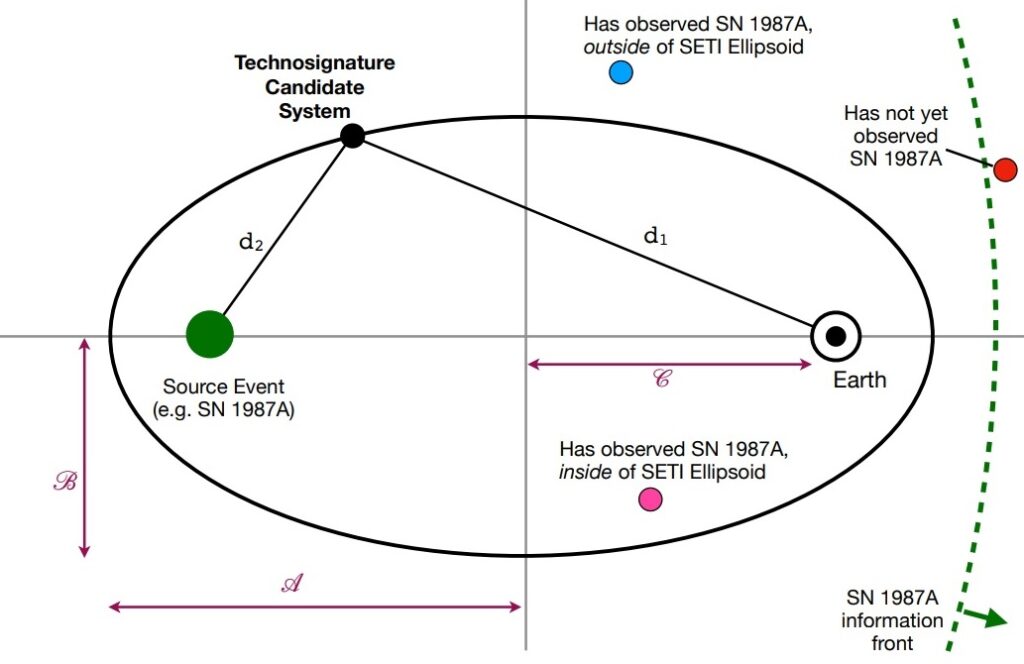In September 2022, James Davenport and his colleagues published a research paper “Searching the SETI Ellipsoid with Gaia”.

The search for extraterrestrial intelligence (SETI) Ellipsoid is a geometric method for prioritizing technosignature observations based on the strategy of receiving signals synchronized to conspicuous astronomical events. Precise distances to nearby stars from Gaia makes constraining Ellipsoid crossing times possible. Here he and his colleges explore the utility of using the Gaia Catalog of Nearby Stars to select targets on the SN 1987A SETI Ellipsoid, as well as the Ellipsoids defined by 278 classical novae. Less than 8% of stars within the 100 pc sample are inside the SN 1987A SETI Ellipsoid, meaning the vast majority of nearby stars are still viable targets for monitoring over time. They find an average of 734 stars per year within the 100 pc volume will intersect the Ellipsoid from SN 1987A, with ~10% of those having distance uncertainties from Gaia better than 0.1 lyr.
GeekWire picked up the story, you can read the full article here, and watch Jim’s talk at the Astronomy on Tap here.